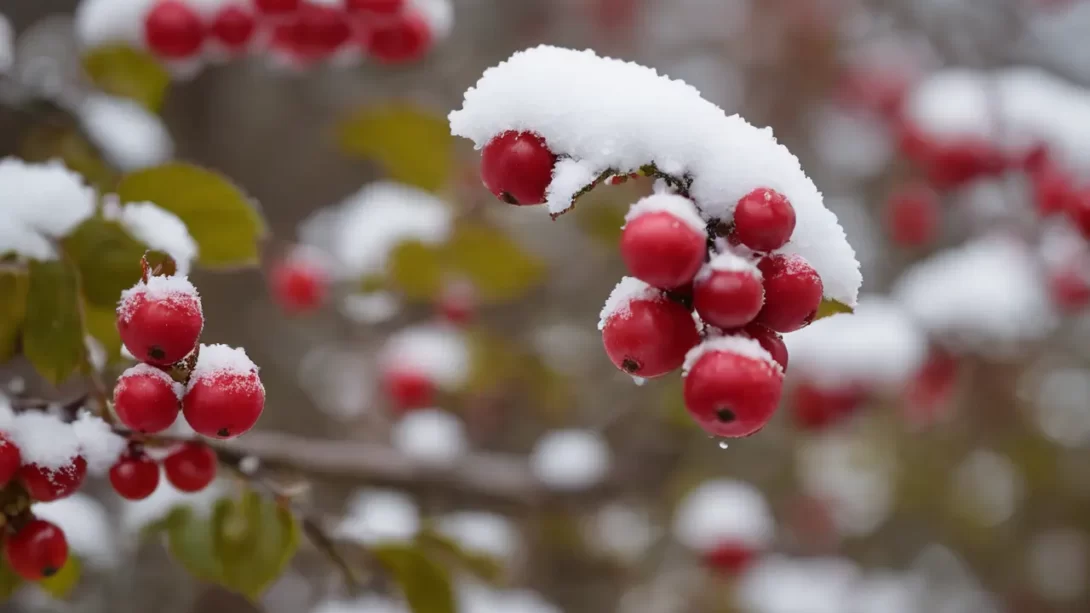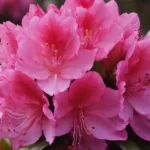Winterberries (Ilex verticillata) are a striking sight in many winter landscapes, known for their vibrant red berries that persist even under snowy conditions. These berries often spark curiosity regarding their edibility and potential uses. This article aims to provide definitive information about whether winterberries are safe for human consumption, exploring both their beauty and potential risks.
Winterberries
Winterberries are a species of holly native to North America, recognized for their bright red berries that adorn leafless branches in the winter. Unlike some other holly species, winterberries lose their leaves in the fall, making their berry-laden branches particularly noticeable. They typically grow in wetlands and wooded areas, thriving in acidic soils.
Distinguishing winterberries from other berry-producing plants is crucial, as many berries in the wild can look similar. Winterberries have a characteristic appearance with clusters of small, round, bright red berries. It’s important to note that while winterberries are a part of the larger holly family, not all holly berries are the same, and they can vary significantly in terms of edibility and toxicity.
Edibility of Winterberries
When it comes to the edibility of winterberries, the straightforward answer is that they are not edible for humans. While not lethally toxic, ingesting winterberries can cause nausea, vomiting, diarrhea, and other uncomfortable symptoms. The berries contain compounds like ilicin, which can be harmful if consumed in significant quantities.
Historically, some Native American tribes used winterberries medicinally in small, controlled doses, but these practices required precise knowledge of the plant and its effects. In general, winterberries have not been widely used as a food source due to their potential adverse health effects.
Winterberries and Wildlife
Winterberries play a crucial role in supporting wildlife, particularly during the harsh winter months. Despite being inedible for humans, these berries are a vital food source for various birds and mammals. Bird species such as robins, bluebirds, and waxwings rely on winterberries for sustenance when other food sources are scarce. Similarly, small mammals like mice and voles may feed on these berries during winter.
This difference in edibility between humans and wildlife highlights an important aspect of natural food chains. While winterberries are toxic to humans, they are an essential part of the ecosystem, supporting wildlife and contributing to biodiversity. Planting winterberries in gardens can therefore offer both aesthetic value and a way to support local wildlife.
Safe Handling and Identification
When dealing with wild berries, safe handling and correct identification are paramount. If you encounter winterberries, it’s advisable to admire them without touching or tasting. For those interested in foraging, understanding the key features of winterberries – such as their bright red color, round shape, and typical growth in clusters – is essential to avoid confusing them with edible berries.
Proper identification is crucial, as mistaking other berries for winterberries, or vice versa, could lead to unintentional ingestion of toxic plants. If uncertain, it’s always best to consult a field guide or a local expert in plant identification. Additionally, wearing gloves when handling winterberries can prevent any potential skin irritation, though such reactions are rare.
Alternative Uses of Winterberries
While winterberries are not fit for consumption, they have numerous other uses, especially in decoration and landscaping. Their striking red berries and stark, leafless branches make them a popular choice for holiday decorations and winter floral arrangements. These plants can add a splash of color to winter gardens, standing out against the often bleak and snowy landscape.
In addition to their decorative value, winterberries have environmental benefits. They attract pollinators during their flowering season and provide essential winter food for birds and other wildlife. Incorporating winterberries into a garden can enhance its ecological value, contributing to a balanced and vibrant ecosystem.
Conclusion
In conclusion, while winterberries (Ilex verticillata) present a visually appealing aspect of the winter landscape with their vibrant red berries, they are not suitable for human consumption. These berries contain compounds that can cause discomfort and illness if ingested. It is important for foragers and garden enthusiasts to recognize and respect the distinction between edible and non-edible berries in the wild.
The role of winterberries in supporting wildlife, however, cannot be overstated. These berries serve as a crucial food source for various birds and mammals during the winter months, playing a key role in the ecological balance. Their presence in the garden not only adds aesthetic value but also contributes significantly to local biodiversity and the health of the ecosystem.
For those interested in incorporating winterberries into their landscape, the plants offer great decorative value, particularly in winter garden designs and holiday decorations. Their ecological benefits, including attracting pollinators and feeding wildlife, make them a valuable addition to environmentally conscious gardens.
As we appreciate the beauty and utility of winterberries, it’s essential to remember the importance of proper plant identification and safe handling practices. By respecting the natural properties of plants like winterberries and understanding their place in our gardens and ecosystems, we can enjoy their beauty safely and responsibly. This approach allows us to appreciate the diverse and vibrant world of plants, enriching our experience of nature and gardening.



